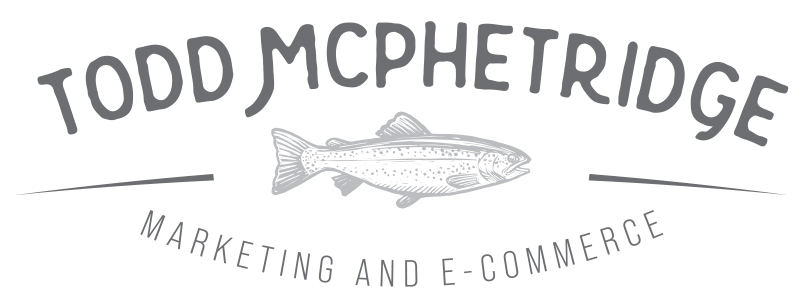Digital Marketing Consultant
Executives want a simple way to decide where the next dollar goes. This guide gives channel owners a practical framework to choose paid social or search using a decision truth table, cohort reads, and payback math. The goal is not to crown a permanent winner. It is to create channel decision rules that reallocate budget when the data says to move. If you are comparing options with a senior digital marketing consultant, use this as the shared language for decisions that finance will sign.
Why a truth table beats debates
- Consistency: the same inputs produce the same decision across weeks, which reduces meeting time and avoids whiplash.
- Cross-team alignment: media, creative, merch, and finance see the same rules and know what will happen when metrics change.
- Cash clarity: decisions reference payback windows and cohort value, not a single platform screenshot.
The core principle
Fund the channel that buys the next incremental customer at or below your CAC guardrail and inside your payback window. If both meet the rule, prefer the channel that expands future demand with stable costs.
Inputs you need each week
- Blended CAC by channel layer: paid social prospecting, paid social warm, search brand, search non-brand, and Shopping. Use total cost over new customers from that lane based on your source of truth.
- Payback by acquisition cohort: day 30 and day 60 contribution per customer by first touch lane. Contribution is revenue minus variable costs and returns.
- Landing family conversion: PDP, comparison, and guide pages by lane. These reveal routing or offer problems that bias a channel unfairly.
- Creative pillar performance for paid social: hook families that drive qualified sessions and add to cart CPA.
- Query mix and marginal CPA for search: percent of spend on exact high-intent themes and the cost of the next conversion when budget increases five percent.
Payback math everyone can accept
Use a simple sanity check before any reallocation.
- Payback days = CAC ÷ average daily contribution per newly acquired customer
- Set a target such as 60 days. If a lane beats the target two weeks in a row, it qualifies for the next dollar, subject to the truth table below.
Decision Truth Table: Paid Social vs Search
| Scenario | Signals | Move | Metric to Judge | Reason |
|---|---|---|---|---|
| New category or product launch | Low non-brand volume, search CPC rising, strong social hook CTR | Shift 10–20% toward paid social prospecting | CAC and day 60 contribution from social cohorts | Search cannot capture demand that does not exist yet, social builds it |
| Search non-brand saturated | Marginal CPA up, query mix drifts to tail, Shopping clicks add little contribution | Pause search expansion, move budget to social winners | Blended CAC by lane and incremental conversions | Stop buying expensive tail, fund scalable discovery |
| Strong creative pillar in social | Two hooks beat CAC guardrail, guide or comparison landings convert | Scale prospecting while holding search at efficient floors | Day 30 and day 60 cohort payback | Creative pull increases future demand, protects long term CAC |
| High intent spike in search | Seasonal terms surge, Shopping hero SKUs in stock, marginal CPA stable | Shift 10–15% to non-brand exact and Shopping hero sets | Contribution per click and payback by lane | Capture in-market buyers while the signal is hot |
| Platform ROAS looks great, cash does not | Platform ROAS high in either channel, blended CAC breaks guardrail | Freeze scale, fix landing or offer, rerun cohort reads | Blended ROAS vs platform ROAS, payback | Do not fund vanity ROAS, fund cash recovery |
| Inventory constraint on hero SKUs | Low stock, backorders, cancellation risk | Reduce Shopping and search on constrained SKUs, fund social on substitutes or bundles | Cancel rate and contribution per order | Protect customer experience and margin |
How to read blended ROAS vs platform ROAS
Platform ROAS includes modelled views and may over credit upper funnel or branded search. Blended ROAS uses total revenue over total media cost and is slower, yet it is the baseline for cash decisions.
- Rule 1: if platform ROAS rises while blended ROAS vs platform ROAS divergence widens, require cohort confirmation before scaling.
- Rule 2: if blended ROAS and payback improve after a social scale, keep the allocation even if platform ROAS looks worse than search.
- Rule 3: run small geo or time holdouts quarterly to recalibrate credit in both channels.
Cohort reads that settle arguments
Use a compact workbook that finance can open and understand.
- Define cohorts by first touch lane: paid social prospecting, paid social warm, search brand, search non-brand, Shopping.
- Track revenue by day: show day 0, day 7, day 30, and day 60 contribution per customer.
- Compare curves: social often lags early but catches up by day 60 when offer architecture and lifecycle are strong. Search may pay back faster but saturate earlier.
- Decision rule: if social cohorts repay inside the target while adding net new customers, fund them. If search cohorts slow down or cost more at the margin, stop climbing bids.
Landing alignment that keeps the fight fair
Routing errors bias the decision. Fix landing paths before you change the split.
- Paid social: prospecting to guides or comparison pages that repeat the hook promise and end with a clear CTA. Warm traffic to PDPs with price justification and delivery clarity near the CTA.
- Search: non-brand to comparison pages or curated collections. Branded to a concise brand page or top category with trust stack and current offer context.
- Shopping: PDPs with accurate variant images and a job-based bundle tile to lift AOV.
Budget reallocation rules you can automate
- Step size: move five percent of total budget at a time. Evaluate after one week. Use two consecutive wins before moving again.
- Guardrails: never scale a lane that breaks CAC or payback, even if platform ROAS looks high.
- Freeze conditions: hold allocations when inventory on top SKUs is below a safe threshold or when returns spike.
Signals that favor paid social
- Strong hook CTR with stable add to cart CPA on guide or comparison landings
- Non-brand marginal CPA in search worsening after a small budget increase
- New product or category where search volume is thin, but creative pillars pull qualified sessions
- Healthy day 60 contribution for social cohorts due to effective lifecycle and post-purchase offers
Signals that favor search
- Spiking in-market queries for seasonal or urgent needs with stable marginal CPA
- Shopping hero labels with high contribution per click and strong stock coverage
- Brand protection required due to competitor conquesting or coupon pollution
Playbook: one-page decision sheet for the weekly meeting
| Metric | Paid Social | Search Non-Brand | Shopping | Decision |
|---|---|---|---|---|
| Blended CAC vs guardrail | ___ | ___ | ___ | Fund lanes at or below guardrail |
| Payback days (target __) | ___ | ___ | ___ | Shift if a lane beats target two weeks |
| Cohort day 60 contribution per customer | ___ | ___ | ___ | Favor stronger curve if CAC ties |
| Marginal CPA trend after +5% spend | ___ | ___ | ___ | Stop funding a lane that degrades |
| Inventory and returns flags | ___ | ___ | ___ | Freeze or reroute if flagged |
Creative and query hygiene checks before any move
- Paid social: at least three active pillars, hooks named and mapped to landings, frequency sane on warm audiences.
- Search: exact themes protected with negatives, Shopping labels for profit tier and stock, title patterns tested for CTR.
- Offer architecture: PDP price justification near the CTA, a visible job-based bundle, and one checkout add-on.
Examples that show the rule in action
Case A: social wins
- Search non-brand marginal CPA rises 18 percent after a small budget increase, query quality flat.
- Social prospecting CAC sits inside guardrail, day 60 contribution per customer surpasses search.
- Call: move five percent of spend from non-brand to social prospecting for two weeks, review cohort curves, and scale if the win repeats.
Case B: search wins
- Seasonal comparison terms surge, Shopping hero SKUs in stock, marginal CPA stable.
- Social CTR dips due to creative fatigue.
- Call: shift ten percent to non-brand exact and Shopping hero sets, refresh social hooks, and reassess next week.
Scorecard for executives
- Top line: spend by lane, new customers, blended CAC, and payback
- Truth table outcome: the rule that triggered the move and the expected effect
- Cohort panel: day 30 and day 60 contribution per customer by lane
- Risk notes: inventory or return warnings, promo exposure
FAQ for execs and channel owners
Why not use platform ROAS alone
It does not reflect cash recovery or incrementality by cohort. Blended CAC and payback keep you honest.
How often should we reallocate
Weekly is enough. Move in small steps, two wins in a row before scaling further.
Does this punish brand search
No. Brand gets a floor for message control and protection. Extra dollars go where the next customer costs less at the margin and pays back on time.
Get a Channel Decision Sheet
If you want a customized truth table and one-page scorecard, request a channel decision sheet. I will map your budget reallocation rules, define the reads for blended ROAS vs platform ROAS, and set payback targets that finance approves. Expect clear channel decision rules and a weekly workflow that shows when paid social should win the dollar over search and when it should not. Perfect for teams that want senior guidance from a digital marketing consultant without adding agency layers.

















